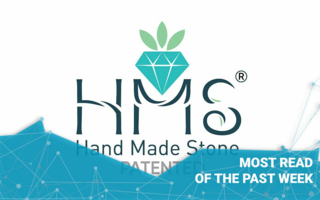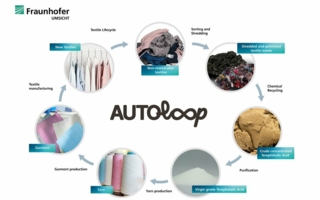28/01/2020 – Robotics in the textile industry – Part 1 — auf Deutsch lesen
Potential applications in the textile industry
Robots are drivers of the megatrend digitalization. The Saxon Textile Research Institute e. V. (STFI) can show first results in the field of robotics.
The possibility of increasingly individualising textile products presents textile producers with increasing challenges. Batch sizes are shrinking as the number of variants increases.
On the other hand, demographic change means that vacancies can no longer be filled because a larger number of older employees are retiring and the demand cannot be met by fewer career starters. With the retirement of the older generation, a great deal of specialist knowledge and experience disappears from the companies.
The question now arises as to how small and medium-sized enterprises can continue to produce effectively under these circumstances. The use of robotics should be seen as one possibility. The use of industrial robots has established itself for decades in other branches of industry, e.g. automotive engineering, as a proven tool for automation technology.
Robots relieve employees of repetitive, sometimes even stupid tasks. They can handle heavy components with high precision and at high speeds. Especially in hazardous environments with vapours, dusts and high temperatures, they relieve the strain on employees.
But why haven’t you established yourself in the textile industry yet?
You have to take a closer look at the textile industry: The textile industry is dominated by small and medium-sized companies. They have less access to robotics than larger companies. Similarly, the high investment rates of robotic systems have so far ruled out any acquisition. Many existing machines and systems are also difficult to network due to a lack of interfaces. A major hurdle for the use of robotics in the textile industry is the material itself. Gripping textiles is very difficult. The limp and flexible properties place high demands on the gripping and guiding of the material.
In this three-part series of contributions, the topic of robotics in the textile industry will be dealt with. Part 1 shows current development trends and application potentials in the textile industry.
Read the complete article by Falko Schubert in our printed issue textile network 1-2/2020.
Or you can request your free sample copy now. Please click HERE to do so.




